Have you given much thought to the power of your mind, especially when it comes to the day-to-day decisions that you make that collectively determine the paths you take? Last week’s blog post introduced you to The Nine Environments of You — a powerful tool to help you balance your life by examinging nine different areas. Today’s post will take a closer look at the first of the nine environments, called the Memetic environment.
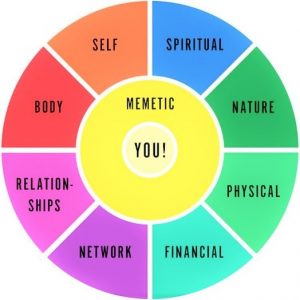 Your memetics include your beliefs, values, ideas, thoughts, and cultural norms. In other words, it’s the lens through which you view the world. As you can see from the diagram, the Memetic environment touches all the other environments. Last week I shared a deeply personal story to exemplify how all nine environments of your life work together and affect each other.
Your memetics include your beliefs, values, ideas, thoughts, and cultural norms. In other words, it’s the lens through which you view the world. As you can see from the diagram, the Memetic environment touches all the other environments. Last week I shared a deeply personal story to exemplify how all nine environments of your life work together and affect each other.
The word “memetic” comes from the Latin word “meme.” A meme is a unit of social information that identifies ideas or beliefs that are transmitted from one person or group of people to another.
The Power of Focus
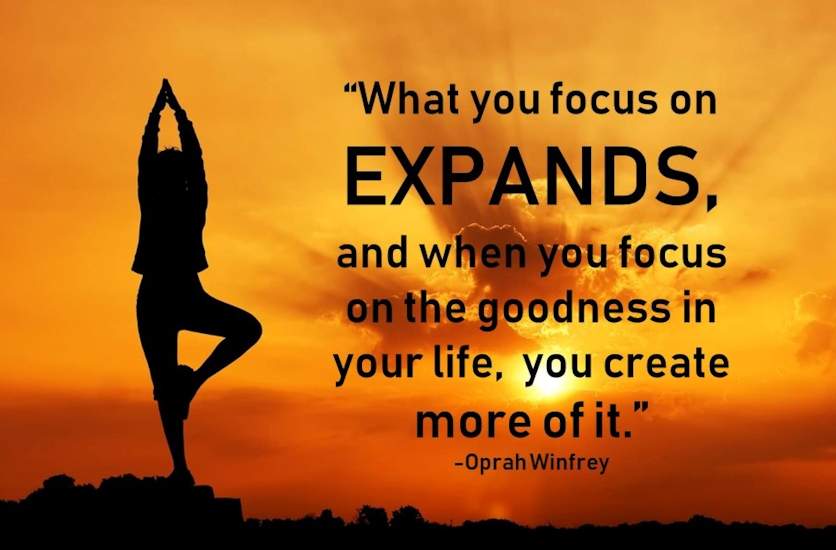 The world is full of ideas and beliefs that have been passed down from one generation to the next. The question is, what ideas or beliefs does your mind focus on? How does this impact your ability to manifest your intentions for your life?
The world is full of ideas and beliefs that have been passed down from one generation to the next. The question is, what ideas or beliefs does your mind focus on? How does this impact your ability to manifest your intentions for your life?
As you think about what makes you happy–what makes your heart sing–you’ll discover that you have motifs running through your life.
In musical terms, a motif is a short melodic idea that appears repeatedly in a piece of music, sometimes exactly the same and sometimes changed. When a motif returns, it can be slower or faster, in a different key, or with the pitches or rhythms altered. The first movement of Beethoven’s Symphony No. 5 has the most famous motif in Western classical music, known as the fate motif. Click here to listen and you will hear how Beethoven very cleverly repeated this famous motif many times throughout the entire seven-minute movement.

A motif in your life can be an affirmation or a limiting belief. What are you repeating over and over? How does that serve you…or not serve you…to repeat it?
So often, people focus on what they do not have or have not yet achieved. This becomes a “motif” in their life. The more you focus on what has not yet occurred, the more your attention–your point of attraction–is on the fact that you do not have what you want. Since we get more of whatever we focus on, we continue to get more of what we don’t want.
Here’s an example of a common affirmation I hear: I am debt free. With this affirmation, the focus is on debt. Is that what you want to attract? Of course not!
Here’s a rework of this affirmation: I am financially independent and free. The original affirmation puts the focus on debt—what you don’t want. The rework of this affirmation puts the focus on the desired outcome—financial freedom. It helps your mind to visualize freedom instead of debt, since we viusualize whatever words we feed our minds.
Change a negative motif to an affirmation. Act as if you already have what you want and focus on that, and it will more easily manifest in your life.
I did this back in 2007 when I caught myself repeating something that did not serve me well. I kept saying “I am overwhelmed.” When I realized that I had been saying that to myself and to others for months–and feeling more and more overwhelmed with each passing day–I made a conscious choice to create a new affirmation that supported what I wanted to attract: “I am enjoying all the time I need for what’s most important to me.” Although I still had a lot going on, changing the messages I was sending my brain made a difference in how I felt and the choices I made about how I allocated my time.
Those who program themselves for success find a way to succeed even in the most difficult of circumstances. Solutions to most problems come from one source and one source alone: yourself. -Napoleon Hill
As you grew up, various people in your life–aunts, uncles, parents, grandparents, friends, teachers, and the cultural norms you learn from society–sent you messages that “programmed” your mind. This formed your thoughts and beliefs about yourself, others, and the world you live in.
Since the Memetic environment touches all other eight environments, everything else gets filtered through your mind. If you want to change something in any of your environments, it begins with the thoughts that you think and the language you use with yourself and others.
I grew up in a family that had enough money to live very comfortably. When I was a child, my parents would say, “When you go to college …,” so there was always the assumption that my siblings and I would go to college. Because there was plenty of money and my parents told us they would support us through college, none of us established college savings accounts. Whatever money I earned in high school was spent on clothes, makeup, music, contributions to a child I sponsored in the Philippines, donations to my church, and entertainment.
Just before entering my senior year of high school, I learned that my parents had not saved any money for my college education and they were filing for bankruptcy. I also learned that they were getting a divorce. By the time I was eighteen, I was on my own. Because I had been declared as a dependent on my parents’ tax returns the year before, their income disqualified me from receiving any financial aid.
I decided that I was going to college, no matter what, and I got busy figuring out how to make it happen. Since my parents did not provide me with any financial assistance — and I did not qualify for student loans, needs-based scholarship assistance, or even work-study programs on campus — I had to take out a regular bank loan for tuition my first year in college.
Although it was a challenge, I supported myself through four years of study at a private college and got my bachelor’s degree.
Change Your Responses
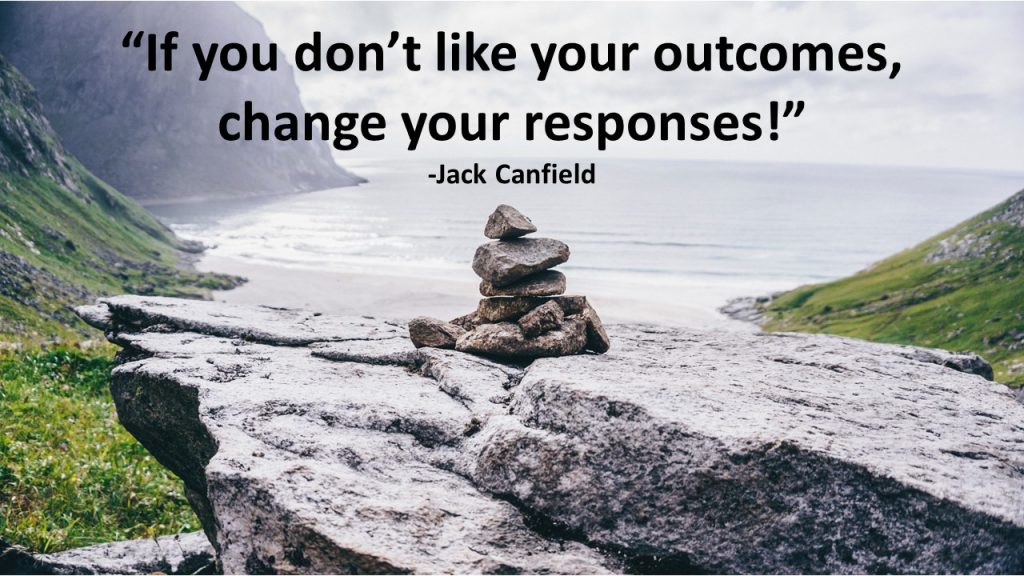 In Jack Canfield’s book, The Success Principles, Principle #1 is to take 100 percent responsibility for your life. It was this fundamental principle that supported me in deciding to attend college.
In Jack Canfield’s book, The Success Principles, Principle #1 is to take 100 percent responsibility for your life. It was this fundamental principle that supported me in deciding to attend college.
Jack shares a powerful equation:
E + R = O (Event + Response = Outcome)
In order to change the sum (what comes after the equal sign), you must change one of the addends (what comes before the equal sign). We often cannot change the events that take place in our lives, but we can change our response to those events. By doing so, we can change the outcome.
Ninety-nine percent of all failures come from people who have a habit of making excuses. -George Washington Carver
Here is an example of how the response one chooses affects the outcome (I chose Response #2):
Event: My parents filed for bankruptcy and got a divorce.
Response #1: I can’t go to college because Mom and Dad can’t afford to pay for it.
(victim response)
Outcome: No college education
OR
Event: My parents filed for bankruptcy and got a divorce.
Response #2: I’m going to college, no matter what I need to do to make it happen. (100% responsibility)
Outcome: Earned a Bachelor’s degree
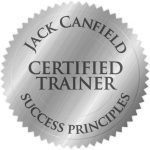 This work has been such a central part of my own personal success that I decided to become a Jack Canfield Success Principles Certified Trainer.
This work has been such a central part of my own personal success that I decided to become a Jack Canfield Success Principles Certified Trainer.
What Are You Tolerating?
 We all have irritations in our lives that we are tolerating. Below are some questions to help you get clear about what you are tolerating in your Memetic environment.
We all have irritations in our lives that we are tolerating. Below are some questions to help you get clear about what you are tolerating in your Memetic environment.
- Do I choose my beliefs rather than simply accepting what I learned or heard?
- Does my current belief system support my growth and development?
- Do I challenge my old beliefs that no longer serve me?
- Am I clear about my core values — my absolutes that are non-negotiable?
- Do I stretch beyond my own comfort zone to learn and grow?
- Do I limit the amount of negative news, radio, TV & social media I am exposed to?
- Do I carefully select “positive programming” for my brain?
- Do I use empowering language regularly (I choose to . . .) vs. victim language (I should, I gotta, I have to)?
- Do I maintain healthy boundaries with others?
- Does the “lens” through which I view my life support me in moving toward my heart’s desires and intentions, or does it move me away from what I want and intend for my life?
Once you’ve answered the questions above, you may have greater clarity about what needs some attention in your Memetic environment. I encourage you to identify some “upgrades” you desire, as well as specific actions you will take, and by when.
Here’s an example of what that looks like:
Upgrades desired in Memetic environment:
- Rework my self-talk by replacing “I can’t … ” with “I am … “
- Clarify and enforce my boundaries with others.
- Remember that I cannot be all things to all people. Make decisions that are based on my own values and priorities.
Actions to be taken by when:
- Starting tomorrow, begin programming my brain with new beliefs by reading my “I am” statements every morning while coffee is brewing.
- Starting today, leave the room or end a conversation as soon as someone becomes disrespectful.
- Starting today, employ the 24-hour rule: wait for 24 hours before responding to requests of my time that fall outside the bounds of my current responsibilities. Say no to things that are not priorities for me.
Now, it’s your turn to identify the upgrades you desire, the actions you will take, and by when. Choose ONE thing you will do to upgrade your Memetic environment and commit to spending 15 minutes TODAY to take immediate action. As you do this in the coming weeeks with each of the nine environments, get ready to experience synchronicity in your life like never before, as things fall into place.
If you’d like a fresh perspective– someone to help you design the balanced life you want by aligning your vision, priorities, and actions—let’s schedule a no-cost, no-pressure Discovery Call today.
Additional Resources:
- Blog: Balance Your Life – Overview of The 9 Environments of You
- Free Webinar: Managing Priorities
- Guide: Cultivating Happiness: Living Life on Your Terms
- Guide: Creating New Habits
- Guide: Living with Purpose


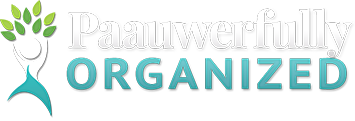




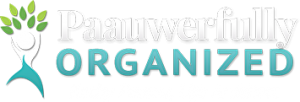



I started reading your Balance Your Life series which I like. In part 1, you suggest reading my “I am” statements first thing. I think the first step is to create them. Do you have any examples? Also, how do you go about discovering if your belief system supports your growth and development, or if you have old beliefs hanging on that no longer serve you?
I have examples of I AM (affirmation) statements in my blog post at https://orgcoach.net/key-living-life-want/. I even show a graphic of the card I’ve sent to myself with all of the affirmations in the card. This makes it easy for me to take my affirmations with me and read them wherever I go. For example, right now I am in Kona, Hawaii and I have my I AM statements with me in a card that I keep in my purse.
You also asked how you go about discovering if your belief system supports your growth and development, or if you have old beliefs hanging on that no longer serve you. This is something that takes more time. When I am coaching someone, we begin with a pre-coaching questionnaire that draws out things like core values, intentions, skills, and talents. Drilling down in this way helps individuals to become aware of beliefs that no longer serve them. In any areas of your life where you’re feeling stuck, it;s a good idea to drill down and discover the beliefs that may be holding you back. Some people can do this work on their own, and others need the assistance of a skilled coach to help them. If you’d like to schedule a no-cost Discovery Call with me, please visit http://orgcoach.net/discovery-call/.
Kathy, Each blog you produce provides quality checkpoints that have provided me with so many ah-ha moments of balancing my life.
I have found you never fail to over deliver with each and every post!